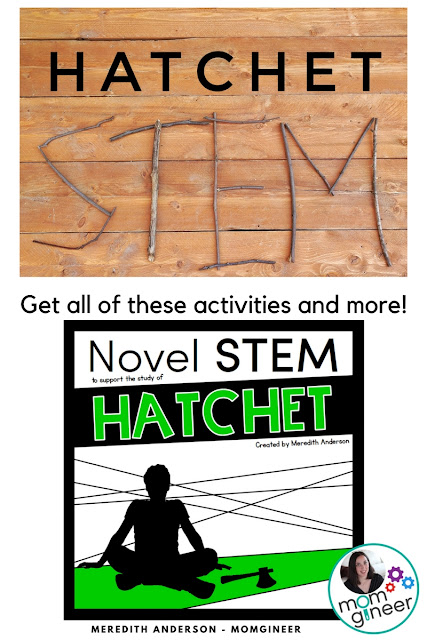Project-Based Learning for a Unique Hatchet Novel Study
Hatchet, by Gary Paulsen, is a classic survival story that resonates with tweens and teens alike. It lends itself well as a middle school read aloud or book club choice, and offers ample project-based learning activities so that your students can experience Brian's adventures right alongside him.
Disclaimer: I may earn a small commission for my endorsement,
recommendation,
testimonial, and/or link to any products or services from this website.
Your purchase helps support my work in bringing you downloads of value
and information about educational resources. The link below is an Amazon affiliate
link. You can read my full disclosure here.
I also wanted to make sure to add in some math and science activities that could have helped Brian in his isolation. **Spoiler Alert** If you have not yet read this book, you may want to stop here. I will be referring to several happenings in the book, so be forewarned.
How Far Off Course Could Brian Have Gotten?
When we aren't yet too far into the book, and Brian has successfully survived the first leg of his adventure (crash landing), he at first thinks a search and rescue team will find him before long. At one point, though, he realizes that he could be quite far off course of his original flight path. How far off course? This is the first exercise in the Hatchet STEM resource I created to accompany this book.
The page shown above is one of three options so that kids can work at the level that is appropriate for them.
Brian quickly realizes he needs a shelter, so the first STEM challenge is to create a lean-to shelter.
Design a Shelter for Brian STEM Challenge for Hatchet
This one is amazing to do outside if possible! It can be quite challenging to create one that will hold up to weather and animals.
In addition to shelter, the other main important survival issue is food. Can you design and create a bow?
Design a Bow for Brian Hatchet STEM Activity
The bow ties in nicely to two science experiments, springs and refraction (when Brian tries to catch the fish but they are at a different location than they appear).
Science Activities for the book Hatchet
For these, I created a simple Hooke's Law experiment that you can do with springs or rubber bands to measure the deflection of a spring and calculate the spring constant, and then a refraction experiment to explore how light bends through water.
Measure the Deflection of a Spring for Hooke's Law
For the Hooke's Law experiment, measure the deflection of a spring depending on the weight applied. You can do this as I've shown above, hanging a spring off a craft stick supported be two cardboard tubes.
Explore Refraction of Light Science Activity
For the refraction, use a laser pointer to shine a light on graph paper or a coordinate plane, record the results, then place a glass of water in the line of the laser light and see where the light lands.
The final STEM challenge ties in to the end of the book when the plane's tail becomes visible and Brian seeks out the survival pack in the plane.
Design a Raft STEM Activity for Brian in the Read Aloud Hatchet
Design and create a raft:
In addition to the challenges, there are engineering vocabulary cards and background information to go with the challenges. Another great challenge to do after this one is to create an FM receiver/radio. It could be fun to create a transmitter too, but likely not a good idea based on local laws in your area. You can find a few simple FM radio kits, such as this Snap Circuits one (which I favor, because you can build and rebuild it over and over):


I hope you can use some of these activity ideas while studying Hatchet. If you would like the supporting resources that I have created, please click on the image below to head to my Teachers pay Teachers shop, where you can purchase them:
Not interested in the paid version? No problem! Pin this post so you can come back later to remember all the challenges I've shared above:

















No comments:
Post a Comment